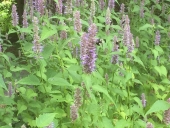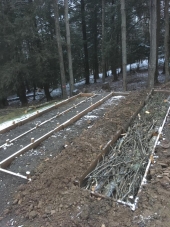Where I live the county cleans out the topsoil that washes into the ditches on the sides of the dirt roads every year and people like to use that for grading around their house. A few years ago, my parents had them dump some topsoil in their lawn to flatten it out a bit (not what I would have done, but wasn’t my call.) Unfortunately, the soil they brought came from the sides of the asphalt country roads, not the dirt roads, and it was pretty sandy, mixed with bits of gravel and small pieces of asphalt. Given that they had a mountain of soil on their lawn and didn’t want to deal with finding someone to pick it up and haul it away, they used it for the grading anyway. Just recently, I built some raised beds for them where they had the grading done. However I am now realizing that the soil under the raised beds has more asphalt than I thought and I am concerned about the toxins being in the soil and it getting into their annual veggies. The raised beds are 12” high. As I was building them, I also dug a shovels depth lower to loosen the soil and give more room for the roots to grow. Now, I’m second guessing myself, thinking maybe I should sacrifice root space, put down a root barrier, and just build up above the asphalt-laden soil. However, lots of people tear up asphalt and plant underneath, and I found this thread saying asphalt isn’t water soluble.
https://permies.com/t/13571/Safety-planting-asphalt Do you think I should be concerned about the asphalt pieces below the raised beds? I am open to doing soil tests, but I dont know what to be looking for at this point.





